Best Substitutes For Tapioca Flour In Baking
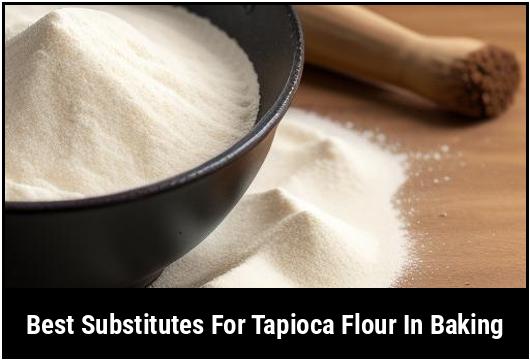
Tapioca flour, also known as tapioca starch, is a gluten-free flour that is commonly used in baking. It is made from the starchy extracted from the cassava plant, a tuberous root vegetable. Tapioca flour is known for its ability to add structure and elasticity to baked goods, making it a popular ingredient in gluten-free recipes. However, there may be times when you need to find a substitute for tapioca flour. Whether you’re out of tapioca flour or looking for a different texture or taste, there are several options available that can work well in baking.
Key Takeaways:
- Tapioca flour is a gluten-free flour commonly used in baking.
- There are several reasons why you may need a substitute for tapioca flour in baking, such as running out of tapioca flour or wanting to achieve a different texture or taste in your baked goods.
- There are various types of substitutes for tapioca flour, including arrowroot powder, cornstarch, potato starch, and rice flour.
- When choosing a substitute for tapioca flour, consider the texture, taste, and desired outcome of your baked goods.
- If using a substitute for tapioca flour, make sure to adjust the quantity and follow the specific instructions for each substitute.
Why You Need A Substitute For Tapioca Flour In Baking:
There can be several reasons why you might need a substitute for tapioca flour in your baking. One common reason is running out of tapioca flour and not having the time or ability to obtain more. Another reason may be to achieve a different texture or taste in your baked goods. It’s important to note that each substitute will have its own unique characteristics, so it’s essential to consider how it will affect your recipe.
Types Of Substitutes For Tapioca Flour In Baking:
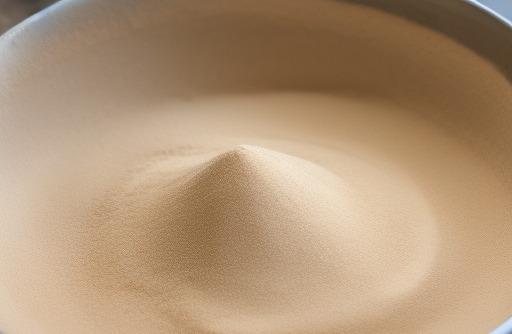
When looking for a substitute for tapioca flour in baking, there are several options to choose from. Each substitute has its own unique properties and will produce slightly different results, so it’s important to pick the one that best suits your needs. Here are some common substitutes for tapioca flour:
1. Arrowroot Powder:
Arrowroot powder is a fine white powder that is derived from the roots of several tropical plants. It is commonly used as a thickening agent in cooking and can also be used as a substitute for tapioca flour in baking. Arrowroot powder has a similar neutral flavor to tapioca flour and, like tapioca flour, works well in gluten-free recipes. It is known for its excellent thickening abilities and its ability to create a tender and light texture in baked goods.
2. Cornstarch:
Cornstarch is a fine white powder made from corn kernels. It is commonly used as a thickening agent in cooking and can also be used as a substitute for tapioca flour in baking. Cornstarch has a neutral flavor and works well in recipes that require thickening. However, it does not provide the same elasticity as tapioca flour, so it may not be suitable for all types of baked goods.
3. Potato Starch:
Potato starch is a white, fine powder made from the starch derived from potatoes. It is commonly used as a thickening agent in cooking and can also be used as a substitute for tapioca flour in baking. Potato starch has a mild flavor and works well in gluten-free recipes. It is known for its ability to create a tender and moist texture in baked goods. However, it may not provide the same chewiness as tapioca flour.
4. Rice Flour:
Rice flour is a type of flour made from finely ground rice grains. It is commonly used in gluten-free baking and can also be used as a substitute for tapioca flour. Rice flour has a neutral flavor and works well in recipes that require a light and tender texture. However, it may not provide the same elasticity as tapioca flour, so it may not be suitable for all types of baked goods.
Best Substitutes For Tapioca Flour In Baking:
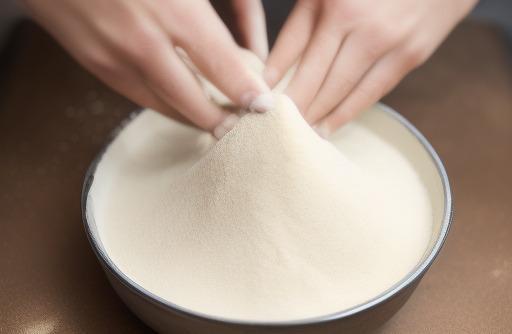
1. Arrowroot Powder:
Arrowroot powder is one of the best substitutes for tapioca flour in baking. It has similar properties to tapioca flour and can be used in a 1:1 ratio in most recipes. Arrowroot powder works well in gluten-free recipes and can add structure and elasticity to baked goods. It also creates a light and tender texture, making it a great substitute for tapioca flour.
2. Cornstarch:
Cornstarch is another excellent substitute for tapioca flour in baking. While it may not provide the same elasticity as tapioca flour, it can still be used to thicken and add structure to baked goods. Cornstarch can be used in a 1:1 ratio in most recipes. However, it’s important to note that it may make the texture slightly more delicate, so it may not be suitable for all types of baked goods.
3. Potato Starch:
If you’re looking for a substitute that provides a tender and moist texture, potato starch is a great option. It can be used in a 1:1 ratio in most recipes and works well in gluten-free baking. Potato starch has a mild flavor and can add structure and moisture to baked goods. However, it may not provide the same chewiness as tapioca flour, so it may not be suitable for all types of recipes.
4. Rice Flour:
Rice flour is a versatile substitute for tapioca flour and works well in gluten-free baking. It can be used in a 1:1 ratio in most recipes and adds a light and tender texture to baked goods. However, it may not provide the same elasticity as tapioca flour, so it may not be suitable for all types of recipes. It’s also important to note that rice flour can sometimes have a slightly grainy texture, so it’s best to use a finely ground variety for baking.
Choosing The Right Substitute For Tapioca Flour In Baking:
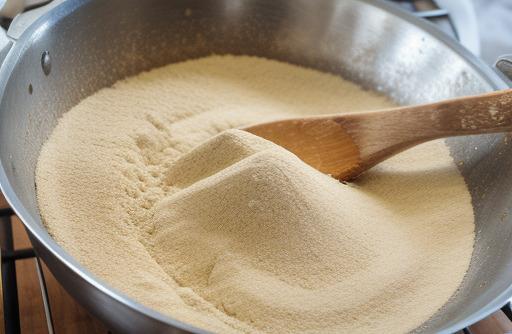
When choosing a substitute for tapioca flour, it’s important to consider the texture, taste, and desired outcome of your baked goods. Each substitute will have its own unique properties and may affect the final result of your recipe. Here are some factors to consider when choosing a substitute:
-
Texture: Consider the texture you want to achieve in your baked goods. Arrowroot powder and potato starch can both add structure and moisture, while cornstarch and rice flour can contribute to a lighter and more delicate texture.
-
Taste: Consider the flavor of the substitute. Arrowroot powder, cornstarch, and potato starch have a neutral flavor, while rice flour may have a slightly nutty or grainy taste. Choose the substitute that best complements the flavors in your recipe.
-
Gluten-Free: If you need a gluten-free substitute, all of the options mentioned (arrowroot powder, cornstarch, potato starch, and rice flour) are gluten-free and suitable for those with gluten sensitivities or intolerances.
-
Recipe Compatibility: Consider the recipe you are working with. Some substitutes may work better in certain types of baked goods. For example, arrowroot powder and potato starch are often used in gluten-free bread and cake recipes, while cornstarch and rice flour are commonly used in cookies and pastries.
Cooking With Substitutes For Tapioca Flour In Baking:
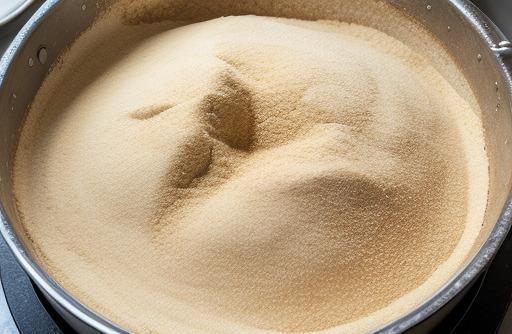
When using a substitute for tapioca flour in baking, it’s important to follow the specific instructions for each substitute. Here are some tips for cooking with substitutes:
-
Adjust the quantity: You may need to adjust the quantity of the substitute depending on the specific recipe and desired outcome. Start by using a 1:1 ratio, but if you find that your baked goods are too dense or too light, you can experiment with adjusting the amount of the substitute.
-
Consider the moisture: Tapioca flour is known for its ability to retain moisture, so if you’re using a substitute that doesn’t have the same property, you may need to adjust the moisture content of your recipe. This can be done by adding more liquid ingredients or adjusting the baking time.
-
Combine with other flours: If you’re looking for a more similar texture to tapioca flour, you can also combine the substitute with other flours such as almond flour or coconut flour. This can help replicate the elasticity and structure of tapioca flour.
-
Test and adjust: Baking is often a process of trial and error, so don’t be afraid to test and adjust your recipe until you achieve the desired result. Keep notes of any changes you make to the recipe for future reference.
Pro Tip: When substituting tapioca flour in a recipe, start with a small batch to test the texture and taste. This allows you to make adjustments before committing to a larger batch of baked goods.
Recipes Using Substitutes For Tapioca Flour In Baking:
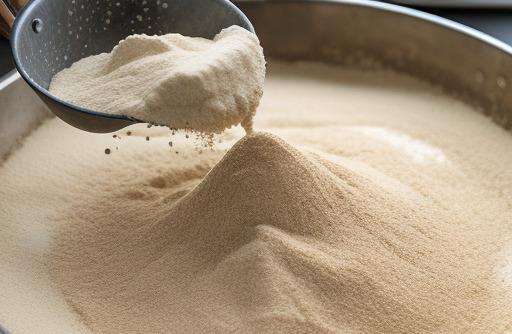
Here are some recipe ideas that can be made using tapioca flour substitutes:
Gluten-free Chocolate Chip Cookies:
-
Ingredients:
- 1 cup gluten-free flour blend (such as rice flour or a store-bought blend)
- 1/2 cup arrowroot powder or cornstarch
- 1/2 teaspoon baking soda
- 1/2 teaspoon salt
- 1/2 cup unsalted butter, softened
- 1/2 cup brown sugar
- 1/4 cup granulated sugar
- 1 teaspoon vanilla extract
- 1 large egg
- 1 cup gluten-free chocolate chips
-
Instructions:
- Preheat your oven to 350°F (180°C) and line a baking sheet with parchment paper.
- In a medium bowl, whisk together the gluten-free flour blend, arrowroot powder (or cornstarch), baking soda, and salt.
- In a separate large bowl, cream together the softened butter, brown sugar, and granulated sugar until light and fluffy.
- Add the vanilla extract and egg to the butter mixture and beat well.
- Gradually add the dry ingredients to the wet ingredients and mix until well combined.
- Fold in the gluten-free chocolate chips.
- Drop rounded tablespoons of dough onto the prepared baking sheet, spacing them about 2 inches apart.
- Bake for 10-12 minutes, or until the edges are golden brown.
- Allow the cookies to cool on the baking sheet for a few minutes before transferring them to a wire rack to cool completely.
Gluten-free Banana Bread:
-
Ingredients:
- 1 3/4 cups gluten-free flour blend (such as rice flour or a store-bought blend)
- 1/4 cup arrowroot powder or potato starch
- 1 teaspoon baking soda
- 1/2 teaspoon salt
- 1/2 cup unsalted butter, softened
- 1 cup granulated sugar
- 2 large eggs
- 4 ripe bananas, mashed
- 1/4 cup milk (dairy or non-dairy)
-
Instructions:
- Preheat your oven to 350°F (180°C) and grease a 9×5-inch loaf pan.
- In a medium bowl, whisk together the gluten-free flour blend, arrowroot powder (or potato starch), baking soda, and salt.
- In a separate large bowl, cream together the softened butter and granulated sugar until light and fluffy.
- Add the eggs, one at a time, beating well after each addition.
- Stir in the mashed bananas and milk.
- Gradually add the dry ingredients to the wet ingredients and mix until well combined.
- Pour the batter into the prepared loaf pan and smooth the top.
- Bake for 50-60 minutes, or until a toothpick inserted into the center comes out clean.
- Allow the banana bread to cool in the pan for 10 minutes before transferring it to a wire rack to cool completely.
Storage And Shelf Life Of Substitutes:
When storing substitutes for tapioca flour, it’s important to keep them in a cool, dry place in a well-sealed container to prevent moisture absorption and spoilage. Depending on the substitute, the shelf life can vary. Here are some general guidelines:
-
Arrowroot powder: It can be stored for up to 2 years if kept in a cool, dry place.
-
Cornstarch: It can be stored indefinitely if kept in a cool, dry place.
-
Potato starch: It can be stored for up to 2 years if kept in a cool, dry place.
-
Rice flour: It can be stored for up to 1 year if kept in a cool, dry place.
It’s always a good idea to check the expiration date on the packaging and discard any substitutes that have expired or developed an off odor or taste.
Conclusion:
While tapioca flour is a common ingredient in gluten-free baking, there are several viable substitutes available. Arrowroot powder, cornstarch, potato starch, and rice flour can all be used as substitutes for tapioca flour in baking. Each substitute has its own unique properties and can produce slightly different results, so it’s important to consider the texture, taste, and desired outcome of your baked goods. By choosing the right substitute and making any necessary adjustments, you can still create delicious gluten-free baked goods without tapioca flour.
FAQS
What Is Tapioca Flour And Why Is It Used In Baking?
Tapioca flour is a starchy, gluten-free flour made from the cassava root. It is commonly used in baking as a thickener, binder, and to add a soft and tender texture to baked goods.
What Are Some Good Substitutes For Tapioca Flour In Baking?
Some good substitutes for tapioca flour include arrowroot flour, cornstarch, potato starch, rice flour, and all-purpose flour. The best substitute depends on the recipe and desired texture.
Are All Substitutes For Tapioca Flour Gluten-free?
No, not all substitutes for tapioca flour are gluten-free. Wheat flour, for example, contains gluten and should not be used as a substitute if you are following a gluten-free diet. Check the labels and ingredients of any flour you plan on using as a substitute to ensure it is gluten-free.
How Do I Determine The Right Amount To Use When Substituting Tapioca Flour In A Recipe?
The amount of substitute needed to replace tapioca flour in a recipe depends on the recipe and the desired texture of the final product. A general guideline is to start with using an equal amount of substitute as tapioca flour, or use ½ to ¾ the amount of substitute if it is more potent than tapioca flour.
Will Using A Substitute For Tapioca Flour Drastically Change The Taste And Texture Of My Baked Goods?
Using a substitute for tapioca flour will likely result in some changes to the taste and texture of your baked goods, but it shouldn’t drastically alter them. Experiment with different substitutes and see what works best for your recipe. Make sure to adjust other ingredients and cooking times as needed.
Sources
About the Author Jenny
I'm Jenny, a housewife with an unwavering passion for food. My culinary journey began with my grandmother's kitchen, and it's now a full-fledged food blog. I've turned my love for cooking into a creative outlet, sharing recipes and stories with a global community of fellow food enthusiasts. It's proof that being a housewife can also mean pursuing your passions and savoring life's delectable moments.
